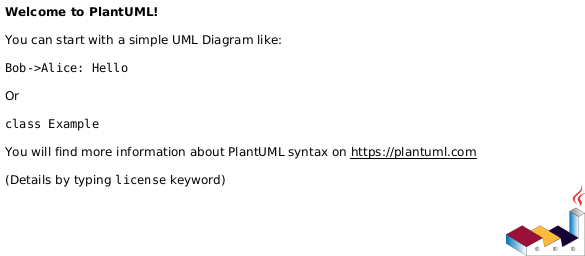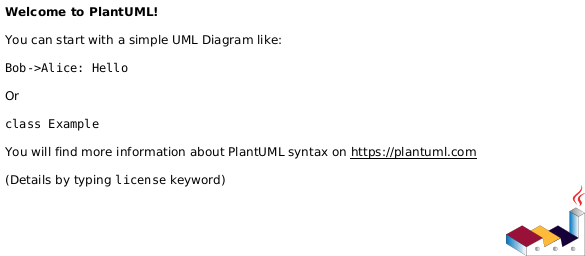@frui.ts/screens
Screens
Since the application should be ViewModel-driven, we need to properly design the application structure within VMs.
There is a simple base class for all view models - ScreenBase. It handles basic lifecycle such as initialize, activate, deactivate. These actions origin from the root View component and are passed to child view models by their parent conductors.
Hierarchical nesting of VMs is necessary to structure almost any application, and thus base classes for the task are supplied as well:
ConductorSingleChild - conductor with manually managed child VMs, e.g., a list with a detail page.ConductorOneChildActive - conductor with a list of children and single active child. This is used when the parent has a static list of possible child VMs and only a single child can be active at a time. E.g., application module with list of pages.ConductorAllChildrenActive - conductor with a list of children of which all are active. This is typical for multi-window screens or dashboards.
We recommend to design the structure of VMs first and only after that start with views implementation.
These components are heavily inspired by the Caliburn.Micro framework from .NET platform.


ScreenBase
Useful functionality
-
navigationName - name used for navigation path (URL)
-
isActive - observable property indicating whether the screen is currently active/visible in the application
-
onInitialize(), onActivate(), onDeactivate() - override these functions in derived class if you need to react to the respective events. If overriding in conductors, don't forget to call the function from base class (super) as well.
-
canDeactivate() - use this function in views to enable/disable close button. You can override this function and implement custom logic. Conductors override this function and forward it to canDeactivate() from their children.
-
requestClose() - use this function to ask the screen's parent to close the screen.
Example
<button disabled="{!vm.canDeactivate()}" onClick="{vm.requestClose}">Close</button>
ConductorSingleChild
Useful functionality
activeChild - observable property with the currently selected childtryActivateChild(child) - call this function to change the currently selected child. Automatically closes the old child if possible (calls canDeactivate on the child) and assigns parent to the new one.closeChild(child) - use to properly close the child (calls canDeactivate)findNavigationChild(navigationName) - implement this function to return proper child view model based on the navigation name provided. It is automatically called when navigating. However, you can reuse it in your logic as well (e.g., when creating a child for tryActivateChild).onChildNavigated(child) - implement this function to do some actions after navigation is done
ConductorOneChildActive
Useful functionality
activeChild - observable property with the currently selected childchildren - add all possible children here. Just adding a child to the list assigns its parent property.tryActivateChild(child) - call this function to switch to another childcloseChild(child) - use to properly close the child (calls canDeactivate) and remove it from children
ConductorAllChildrenActive
Useful functionality
children - add all possible children here. Just adding a child to the list assigns its parent property.closeChild(child) - use to properly close the child (calls canDeactivate) and remove it from children
Busywatcher
Busywatcher is a simple counter of currently running processes that need to display loading progress. You can either manually increment and decrement the counter, get a disposable ticket with getBusyTicket(), or use its watch() function to watch over a promise.
You can also use function decorator @watchBusy. It automates the use of busyWatcher.watch() - if the function the decorator is applied to is async or returns a promise, and the parent class also contains a property named busyWatcher, the function is automatically watched by the busyWatcher.
import { BusyWatcher, watchBusy } from "@frui.ts/screens";
class MyViewModel {
busyWatcher = new BusyWatcher();
@watchBusy
async doLongProcess() {
await someAction();
await anotherAction();
}
}
Navigation
There are several use cases related to navigation:
1. Notify that application navigation has changed
Every time the application needs to update the navigation state (usually resulting in changing the URL), it raises an event. In order to streamline the event issuing, there is a helper function on NavigationConfiguration.
import { NavigationConfiguration } from "@frui.ts/screens";
NavigationConfiguration.onScreenChanged?.(currentScreen);
There are two places where onScreenChanged is called by default:
- Whenever a
ScreenBase is activated. - When a
ConductorBaseWithActiveChild does not have an active child.
You might notice that point 1 would cause problems when activating a parent conductor with already present active child (because both get activated). To handle that, there is a property canBeNavigationActiveScreen in ScreenBase. The property is used as a flag if the actual onScreenChanged should be called. For example in ConductorBaseWithActiveChild, it is implemented as this:
get canBeNavigationActiveScreen() {
return !this.activeChildValue;
}
So, if you are creating some kind of a conductor that contains children, you should implement the property similarly.
Besides the automatic URL update when changing active VMs, you might also want to update URL on some actions within a VM (e.g., a filter is changed). For that, you just need to call notifyNavigationChanged() that is available from the base class ScreenBase whenever you want to update the navigation state.
2. Get current navigation path
When a call to onScreenChanged is issued, the simplest way to get the actual navigation path is to call getNavigationPath on the source view model. It is then its responsibility to get the proper path. The default implementation in ScreenBase recursively calls parent view models to get the full path.
3. React when URL changes
When the navigation path changes from outside of the application, we need the app to react. Because Frui.ts applications are composed as a hierarchical structure of view models, the navigation should start from the top-most level, i.e., the root view model. Simply call its navigate() function. And let it recursively activate its children along the new path.
4. Generate local navigation links
When you want to navigate between children of a conductor, you can use conductor.tryActivateChild(child). This will work, properly update browser URL, and also react to any URL changes. However, the action will be bound to the respective user control such as a button via onClick handler, and thus some typical web actions such as opening the link in a new window will not work. If you need such functionality, we need to generate a navigation URL for the children.
You can either manually call child.getNavigationPath(), use conductor.getChildNavigationPath(), or call a helper function Router.getChildUrlFactory(). This factory function is usefull especially when creating multiple URLs, because it caches the root path.
import { Router } from "@frui.ts/screens";
...
const getUrl = Router.getChildUrlFactory(vm);
<a href={getUrl("childId")}>Link</a>
You can also use application-wide links as described below.
5. Generate application-wide navigation links
You can also use a navigation path for navigating to another part of the application. The hard part here is how to get the proper path.
The first and obvious solution is to generate it manually. That is quite easy provided that you know the structure of your application and navigation names of the respective view models.
<a href={`#/foo/bar/${id}`}>Link</a>
rootViewModel.navigate(`foo/bar/${id}`);
You can also use a typical solution with centrally defined routes. What we don't like about this solution is that you still rely on knowing the proper path for each view model, and in case of any change, you have to remember to update the routes as well. We wanted to find a better solution and keep the knowledge about the application structure as close to the source as possible.
The idea is that you always register only a single parent-child relationship. Then, during the application initialization, these parts are joined to get the full path from the root view model to the deepest child view models.
import { ConductorOneChildActive, Router, ScreenBase } from "@frui.ts/screens";
@Router.registerRoute({ route: "", children: [OrdersViewModel, UsersViewModel] })
export default class RootViewModel extends ConductorOneChildActive<ScreenBase> {
constructor(ordersVM: OrdersViewModel, usersVM: UsersViewModel)
{
...
}
}
import { ConductorOneChildActive, Router, ScreenBase } from "@frui.ts/screens";
@Router.registerRoute({ name: "usersList", route: "users" })
@Router.registerRoute({ name: "userDetail", route: "users/:userId" })
@Router.registerRoute({ name: UserDetailViewModel, route: "users/:userId" })
export default class UsersViewModel extends ConductorSingleChild<UserDetailViewModel> {
navigationName = "users";
constructor(private ordersModule: OrdersModuleViewModel, securityModule: SecurityModuleViewModel)
{
...
}
}
Please note that if you want to use a class' type as its own route name, this will not work:
@Router.registerRoute({ name: UsersViewModel, route: "users" })
export default class UsersViewModel extends ConductorSingleChild<UserDetailViewModel> {
...
}
However, you can use the Router.Self helper instead:
@Router.registerRoute({ name: Router.Self, route: "users" })
export default class UsersViewModel extends ConductorSingleChild<UserDetailViewModel> {
...
}
import { Router } from "@frui.ts/screens";
const router = new Router();
router.start(rootViewModel);
...
const url = router.getUrl("userDetail", { userId: 42 });
await router.navigate("userDetail", { userId: 42 });
await router.navigate(UserDetailViewModel, { userId: 42 });
Navigation summary
The chain of events when using router.navigate for application-wide navigation is as follows:
- Router generates target navigation path
- The navigation path is passed to
rootViewModel.navigate() which recursively activates VMs through the VM hierarchy - When the last VM is activated, it notifies that application navigation has changed which eventually updates URL in the browser's navigation bar.
UrlNavigationAdapter
This is a reference implementation for a navigation adapter that handles browser URL and history changes.
To initialize the adapter, you need to provide the root view model. It will automatically hook to the onScreenChanged handler.
import { UrlNavigationAdapter } from "@frui.ts/screens";
...
const urlAdapter = new UrlNavigationAdapter();
urlAdapter.start(rootViewModel);
Implement ICanNavigate if you want to control the navigation path for children and react to changes in the navigation path. Note that the conductors described above already implement ICanNavigate.
Navigated event
UrlNavigationAdapter triggers the fruitsNavigated event.
You can listen for this event in your application, for example to report pageView to Google Analytics.
interface INavigatedEvent {
screenName: string;
screen: IScreen;
url: string;
}
window.addEventListener("fruitsNavigated", this.onNavigated);
onNavigated(e: CustomEventInit<INavigatedEvent>) {
console.log(e.detail?.url);
}



